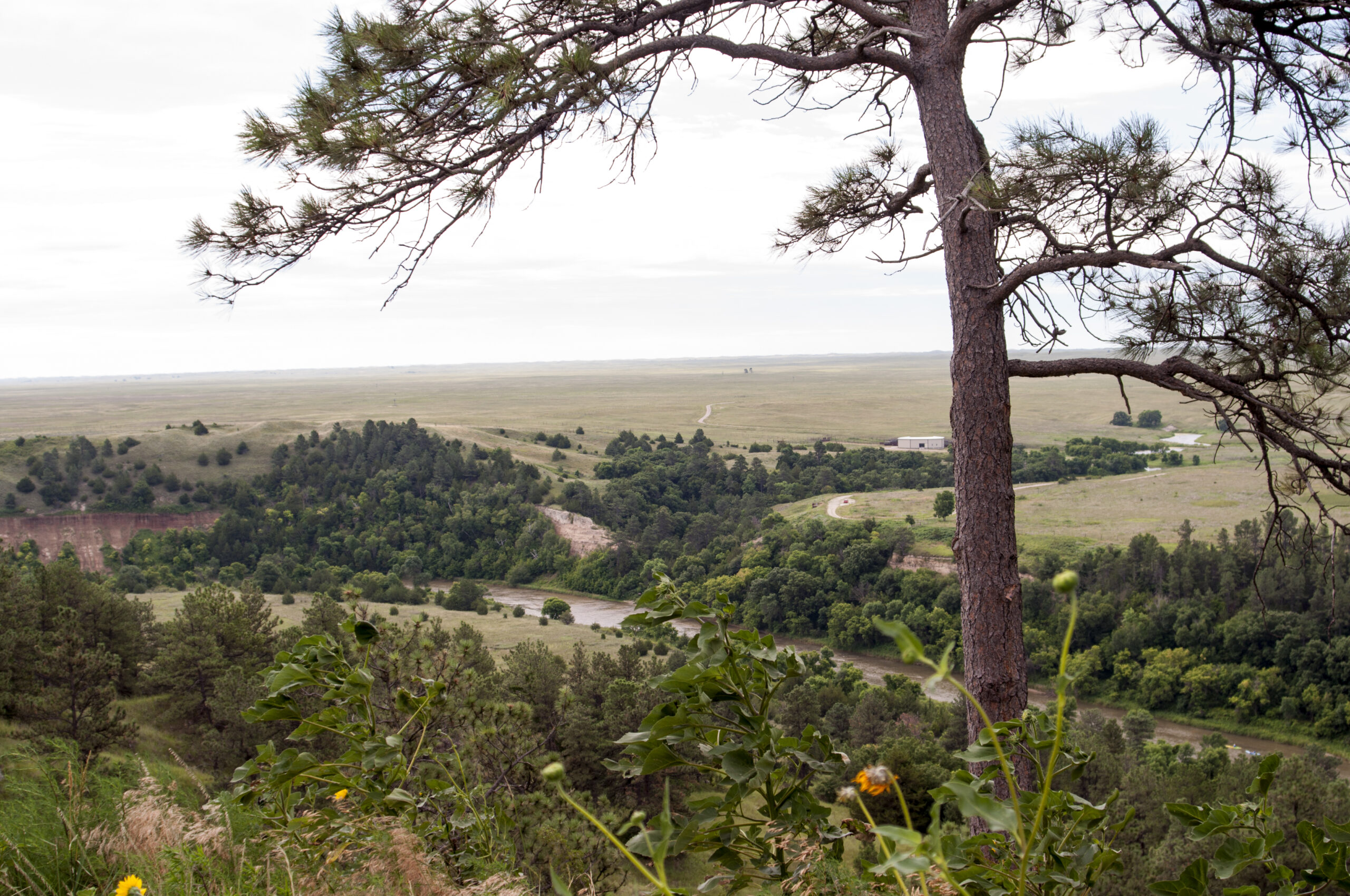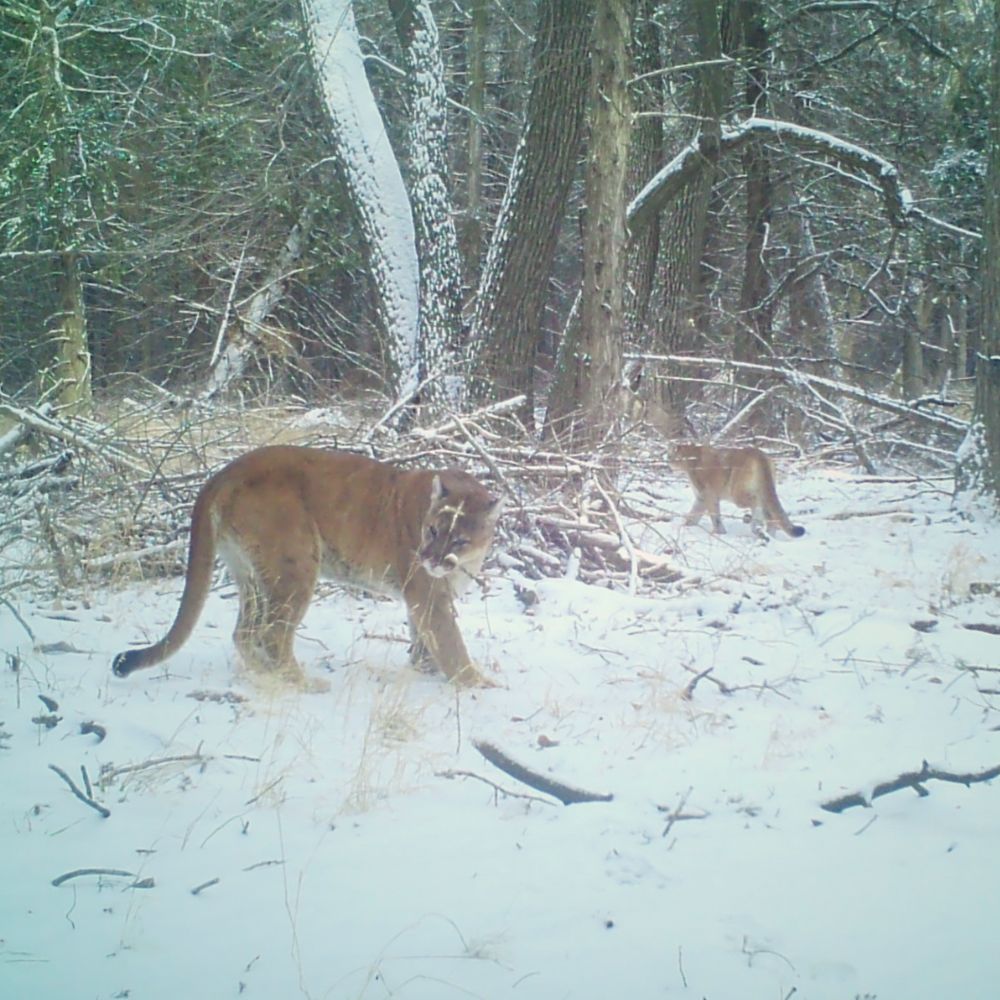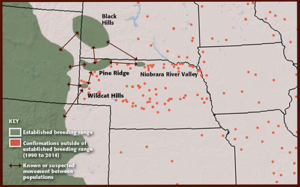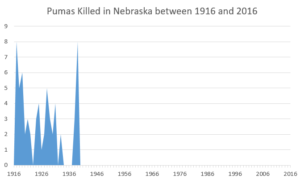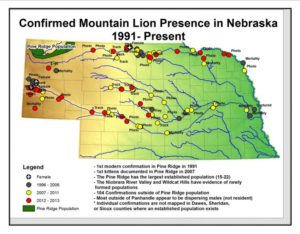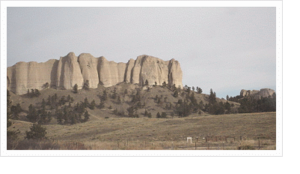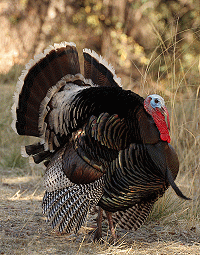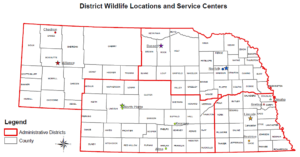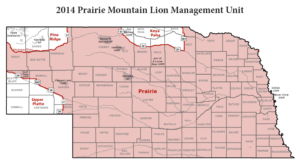Generally, treatment of wildlife in the State of Nebraska is governed by the Nebraska Revised Statutes – the collection of all laws passed by the state legislature. Since our summary below may not be completely up to date, you should be sure to review the most current law for the State of Nebraska.
You can check the statutes directly at a state-managed website.
These statutes are searchable. Be sure to use the name “mountain lion” to accomplish your searches.
The Legislature
The Nebraska Legislature – also called the Unicameral – is the only unicameral state legislature in the United States. It is also the only nonpartisan legislature, meaning that candidates’ political affiliations are not listed on the ballot. The Unicameral consists of 49 members, who are referred to as senators, who serve 4-year terms. Senators are limited to two terms. If you do not know who your state senator is, the Unicameral maintains this website to help you find your senator. If you already know the name of your state senator, you can find their contact information here.
Regular legislative sessions begin each year at 10:00 am on the first Wednesday after the first Monday of January. Regular sessions may not exceed 90 legislative days in odd-numbered years unless four-fifths of senators vote to extend the session. In even-numbered years, regular sessions are limited to 60 legislative days unless four-fifths of senators vote to extend the session. The governor is allowed to call special legislative sessions, but no limit is placed on the duration of special sessions.
State Regulation
Nebraska’s state regulations governing mountain lions in the state can be found in the Game and Parks Commission section Game and Parks Commission of the Nebraska Administrative Code. The regulations are set by the Nebraska Game and Parks Commission.
Nebraska Game and Parks Commission
The Nebraska Game and Parks Commission is made up of nine members appointed by the governor and approved by the state legislature. Eight members represent a district with the ninth serving as an at large member. Nebraska law (Statute 37-101) requires commissioners to be “well informed and interested in matters under the jurisdiction of the commission.” Three commissioners must be “engaged in agricultural pursuits.” No more than five commissioners may be from the same political party. Commissioners may only serve two terms. The commission sets the state’s wildlife regulations. The commission also appoints the officers, agents, and employees necessary to enforce Nebraska’s wildlife and parks laws.
Nebraska Game and Parks

Nebraska Game and Parks is the state’s agency in charge of enforcing wildlife laws. The agency is an extension of the Nebraska Game and Parks Commission’s power in that its officers, agents, and employees are appointed by the commission to enforce the state’s wildlife and parks laws.
Management Plan
Nebraska Game and Parks Commission released its Mountain Lion Management Plan in 2017. The Plan outlines NGPC’s goals to “monitor mountain lion populations and use regulated harvest as a primary strategy for meeting management goals and objectives when possible.”
Hunting Law
Hunting of mountain lions is allowed in the State of Nebraska. The Game and Parks Commission Title 163 and laws governing “recreational” hunting of mountain lions Chapter 37 specify 4 mountain lion management units.

Hound hunting is allowed for game birds, but the Nebraska revised Statutes and hunting regulations are silent with regard to hounding of mountain lions.
Nebraska allows the hunting of mountain lions with rifles 22 caliber or larger and produce at least 900 foot-pounds of bullet energy at 100 yards except .357 magnum rifles or .45 Colt rifles, which the state’s regulations single out as legal weapons. Muzzleloading rifles must be 44 caliber or larger, while muzzleloading muskets must fire a single slug and be 62 caliber or larger. Shotguns used to hunt mountain lions must be 20 gauge or larger and fire a single slug. Handguns and muzzleloading handguns must produce at least 400 foot-pounds of bullet energy at 50 yards. No firearm used to hunt mountain lions may be capable of fully automatic fire, and firearms capable of semi-automatic fire may hold no more than 6 cartridges. Bullets used may not have full metal jackets or be incendiary. For hunting with archery equipment, Nebraska allows the use of longbows, recurve bows, compound bows, and crossbows. Crossbows used to hunt mountain lions must have a draw weight of at least 125 pounds, be shoulder-fired, and not be electronically loaded, cocked, or fired.
The Nebraska Game and Parks Commission sets the state’s mountain lion harvest quotas and a female sub-quota. The quota is kept low in the regions with breeding populations, reflecting the small size of the populations. There is no quota for the Prairie Unit, which has no known lion population. It is illegal to kill or attempt to kill spotted kittens or any mountain lion accompanied by a kitten.
Public Safety Law
Nebraska law (Statute 37-559) states, “Any person shall be entitled to defend himself or herself or another person without penalty if, in the presence of such person, a mountain lion stalks, attacks, or shows unprovoked aggression toward such person or another person.”
Depredation Law
Nebraska law (Statute 37-559) allows any farmer or rancher to immediately kill any mountain lion that is “stalking, killing, or consuming livestock on the farmer’s or rancher’s property.” The farmer, rancher, or one of his/her agent’s must immediately notify the Nebraska Game and Parks Commission and arrange to surrender the lion’s carcass.
Nebraska law (statute 37-472) also provides a process for the issuance of permits to kill depredating mountain lions. In order to receive a permit, a farmer or rancher must contact the Nebraska Game and Parks Commission when a mountain lion has attacked his/her livestock or poultry. The commission will then investigate in order to determine if a mountain lion has truly caused the damage before issuing a permit, which gives the farmer or rancher up to 30 days to kill the depredating lion. After the lion has been killed, the commission must be notified immediately and arrange to receive the lion’s carcass.
Owners of domestic animals do not appear to be required to take certain steps to protect their pets or livestock. There does not appear to be a government-funded compensation program for losses of domestic animals to mountain lions.
Trapping
Mountain lions may not be trapped for fur in Nebraska.
Poaching
Poaching law in the State of Nebraska provides some protection of mountain lions in law, but only as a deterrent. It is rare for penalties to be sufficiently harsh to keep poachers from poaching again. Hunting mountain lions without a permit (Statute 37-411) is a class II misdemeanor. A class II misdemeanor (Statute 28-106) is punishable by up to 6 months of imprisonment and a fine of up to $1,000.
Road Mortalities
The Nebraska Department of Transportation does not keep records of mountain lions killed on state roads.
Captivity
Nebraska does not appear to have laws or regulations regarding mountain lions kept in captivity.
Mountain Lion Legislation in Nebraska
LB 961 (2016)
Introduced by Senator Ernie Chambers on January 14, 2016, this bill was a third attempt to stop mountain lion hunting in Nebraska after Chambers’ previous two bills were killed.
For more information on the bill visit the Nebraska Legislature’s LB 961 webpage.
LB 127 (2015)
“Eliminate provisions relating to hunting mountain lions”
Introduced by Senator Ernie Chambers on January 9, 2015, this bill is a second attempt to stop mountain lion hunting in Nebraska after Chambers’ 2014 bill was vetoed by the Governor.
LB 127 was indefinitely postponed on January 12, 2016 by the Natural Resources Committee, making it effectively dead. The given reasons? Senator Schilz, chair of the Natural Resources Committee, commented that NGPC needs to be able to use hunting as a tool to control wildlife. Other members said that if the legislature banned the hunting of mountain lions, they may be pressured to outlaw the hunting of other species in the future.
LB 671 (2014)
Introduced by Senator Ernie Chambers on January 8, 2014, this bill would have repealed Senator Louden’s 2012 legislation that authorized mountain lion hunting in Nebraska.
This bill was ultimately vetoed by the Governor and failed to become law.
LB 928 (2012)
“a bill for an act relating to mountain lions”
On January 10, 2012 Senator LeRoy Louden of Ellsworth, NE introduced Legislative Bill (LB) 928, “a bill for an act relating to mountain lions.” LB 928’s statement of intent reads:
“LB 928 would authorize the Nebraska Game and Parks Commission to provide permits for hunting mountain lions by allowing Nebraska residents to pay $25 for a chance to win a mountain lion hunting permit in a random drawing. Non-residents would be able to get permits through an auction.”
The bill was passed with an emergency clause 49-0 on April 11, 2012 and was approved by the Governor on April 17, 2012. The emergency clause allows for the bill to take effect immediately upon signing by the governor. What this means is the Nebraska Game & Parks Commission now has the ability to issue hunting permits for mountain lions should they find it appropriate to hold a hunting season.
This bill allows, but does not require, the Game and Parks Commission to issue hunting permits for mountain lions in Nebraska. The bill calls for the agency to issue a drawing for residents and a non-resident auction to take place in order to obtain a hunting permit.
This is in similar fashion to the way NGPC conducts a tag lottery for bighorn sheep, the first season taking place in 1998. Residents pay an application fee to win a bighorn tag that is randomly drawn, while an auction is held for an additional tag for non-residents. The agency has also kept bighorn season closed on four occasions — 2006, 2007, 2010, and 2012 — to allow for herd recovery after hard years.
LB 747/836 (2010)
“a bill to permit killing mountain lions and other predatory animals”
On January 6, 2010, Senator LeRoy Louden of Ellsworth, NE introduced Legislative Bill (LB) 747 to classify mountain lions as predators.
Predator means a badger, bobcat, coyote, gray fox, long-tailed weasel, mink, mountain lion, opossum, raccoon, red fox, or skunk.
Amended text of LB 747 into LB 836
The bill also allowed lions to be killed at any time, without prior permission, if believed to be stalking or killing livestock.
In addition, LB 747 codified the common policy that anyone who encounters a lion and fears for their personal safety or the safety of others may kill the lion without facing legal charges.
On April 14th, the bill was incorporated into LB 836 (mandatory deer depredation hunting season). The mountain lion section was amended to no longer list the species as a predator, but still allowed lions to be killed to protect people and livestock.
LB 529 (1995)
Due to an increase in mountain lions in neighboring states and initial sightings in Nebraska, in 1995, Nebraska legislators voted unanimously to pass Legislative Bill 529 and list the mountain lion as a game animal. While this prevented the unrestricted killing of any lion, bear, or moose in Nebraska, by “[classifying] the mountain lion as a game animal in 1995, it signaled to the Commission that hunting of the species should be allowed if the population was large enough to sustain a harvest” (NGPC Mountain Lion Hunting Season Recommendations, May 24, 2013).
LB 529 did not prohibit the killing of mountain lions that pose a threat to public safety or domestic animals.
Mountain Lion Mortality in Nebraska
In 1890, Nebraska reportedly killed its last native mountain lion. The species was extirpated from the state for one hundred years. Eventually, dispersing individuals from remaining populations in western states recolonized the Black Hills of South Dakota, and then expanded into Nebraska’s Pine Ridge.
We are in the process of obtaining mortality data from 1990-2000, October 2012 to December 2013, and January 2015 to present.


